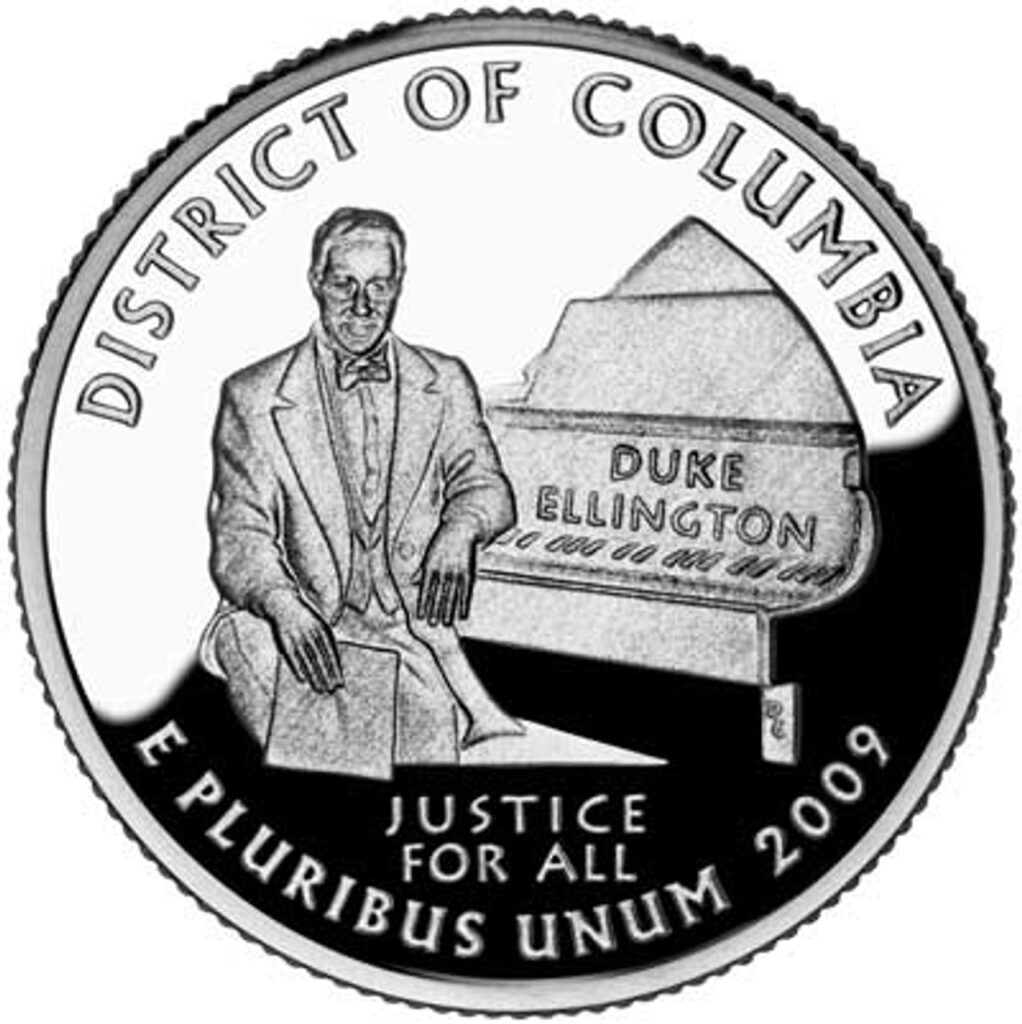On January 23, 1943, Duke Ellington made his first of many performances at Carnegie Hall.
The jazz legend was born Edward Kennedy Ellington on April 29, 1899, in Washington, D.C. His mother surrounded him with dignified women and taught him proper manners and how to live elegantly. Ellington’s friends thought, “his casual, offhand manner, his easy grace, and his dapper dress gave him the bearing of a young nobleman” and nicknamed him “Duke.”
Duke began playing piano at seven, but didn’t take it seriously until age 14, when he snuck into a local pool hall and was moved by the piano music he witnessed. He soon formed a band and performed around the D.C. and Virginia areas, to both African-American and white audiences – which was rare at the time. Soon, Ellington and his band were performing on weekly radio shows and getting national attention. Ellington made his first big screen appearance in Black and Tan in 1929. As music styles evolved, Ellington adapted, but always stayed true to the music he wanted to create.
By the 1940s, Ellington was a star and had performed at most of America’s great jazz venues and had a long-standing residency at Harlem’s Cotton Club. Then, in January 1943, he was invited to perform at New York City’s legendary Carnegie Hall. Ellington had grand plans for the performance that some had hoped would close the gaps between jazz and classical, as well as black and white. He also wanted to be musically innovative. At the time, most jazz standards were around three minutes long. But Ellington wanted to produce long-form compositions to tell full stories.
The big night came on January 23, 1943, and drew an unusually mixed crowd for Carnegie Hall. Among the notable attendants were Eleanor Roosevelt, Leopold Stokowski, Count Basie, and Frank Sinatra. Ellington opened the show with “Star-Spangled Banner,” perhaps to rouse patriotism as it was also a benefit for Russian war relief. The show’s centerpiece, advertised as “Ellington’s first symphony” was “Black, Brown, and Beige.” The three-movement, 45-minute song told the story of African Americans from slavery onward. Each section represented a different era. While “Black” was about slavery, “Brown” centered on Emancipation and service in American wars. Finally, “Beige” covered the most recent area, particularly life in Harlem.
Ellington had labored over the piece, putting in hours of extensive research and producing multiple drafts. He was even working on it up until the night before the performance. While the packed audience thoroughly enjoyed the show, it was panned by some critics, who found it unrecognizable as jazz and formless as classical. As one Ellington biographer noted, however, since it was such a new concept, it shouldn’t have been judged by preexisting standards.
Discouraged by its poor reviews, Ellington only ever performed the entire 45-minute piece one more time, and played and recorded shortened, reworked sections instead. Yet he wasn’t discouraged from writing longer pieces, though they were often suites tied together by an inclusive theme. Additionally, Ellington continued to perform at Carnegie Hall, putting on annual concerts where he continued to premiere new songs. These included “New World A-Comin,’” “Liberian Suite,” “Perfume Suite,” and “A Tonal Group.” In all, he performed at Carnegie more than 20 times over the course of 30 years. His last performance there came on July 8, 1972, just two years before his death.
Discover what else happened on This Day in History.






Many critics seem stuck in the past. All they want is the tried and true. Are reluctant to accept the new and evocative. Regret that the “Duke” encountered such an attitude back in 1943. Hope someone performs the whole composition again and that is available for viewing. I certainly want to watch and hear it. He was a true musical genius.
The Duke’s star will always shine high in the music world. He has brought so much musical enjoyment into so many lives over the decades, including, fortunately, my own. RIP Duke. Thanks Mystic for this wonderful essay and for the link to “Black, Brown and Beige.”
Duke Ellington is buried in Woodlawn Cemetery in the Bronx New York along with Celia Cruz and Miles Davis.
Duke Ellington is buried in Woodlawn Cemetery in the Bronx New York along with Celia Cruz and Miles Davis.